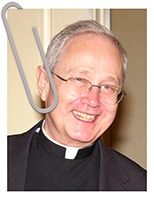Recently, I prepared to lead a discussion on why there is so much hatred in our world.
I started with the dictionary. Hatred – “extreme dislike or disgust.” Ouch! I realized quickly I have my dislikes and disgusts… but hopefully, not extreme. We speak harshly of others who fit that definition. But we dress it up in nicer clothes when we think about ourselves. In moments of honesty, we might speak of ourselves as being turned off, challenged, annoyed…
Perhaps I need to look at my own dislikes and disgust and where I might cross the line. I may need to “own” some things… not just understand the psychodynamics!
What follows draws heavily from Why People Hate: The Science Behind Why We Love to Hate.
The Fiery Emotions that Fuel Hatred
Four of the primary reasons people hate others
- People want a scapegoat
When you are struggling with problems, it is easier to funnel negative energy into blaming someone else than to confront your role in your problems. Many people join hate groups because it allows them to channel the blame for all of their problems into another group of people while being supported by a group of people who share their beliefs and make them feel like they belong.
2. Many are lonely and seeking connections, even hateful ones
Many other people join hate groups because it fills their need for friendship and belonging. You don’t need to do or be anything special, all you have to do is be negative towards other people. It feels easy. Likewise, some people find it easier to make connections by putting others down and seeing who agrees than to work at being interesting and valuable companions.
3. They fear the unknown
When someone new enters a group, sharing hatred toward the new person is a way for the existing group to strengthen bonds defensively against the outsider.
4. Their insecurities get the best of them
Hatred also surfaces when people are highly insecure. Often, they’ll compare themselves to other people. When they conclude that the other person may be better than they are or possess traits that they don’t want to acknowledge that they also share, people may speak out against that person and project their anxiety onto them.
Understanding the Bonding Power of Hatred
If people share their negative opinions, it opens the ability for people to form connections in three key ways:
- Hatred defines social lines
Humans desire structure and certainty in their social lives. To establish that, people naturally divide into in-groups (social circles where everyone feels like they belong with one another) and out-groups (people outside of social circles and are typically not welcomed into them). It satisfies their need to feel connected to others.
2. Mutual dislike evokes a stronger response than mutual like
People who have a negative opinion of another are far more likely to say they would get along well with someone who shared their negative opinion than those who have a different opinion.
3. Sharing hatred can be an expression of vulnerability
To form lasting, intimate bonds with people, you have to be vulnerable with them. You have to share your authentic, unfiltered feelings. Often the easiest way to be vulnerable is to share negative feelings about others.
Insight: Haters may not be happy people; they have to build themselves up by tearing others down. It can be tricky to spot when we cross the line.
Questions
- Are their times when you can own extremes?
- How can you help a hater? (More in aanother post)
Click below for an audio version of this Vincentian Mindwalk
Vanessa Van Edwards is a national best-selling author & founder at Science of People. Her groundbreaking book, Captivate: The Science of Succeeding with People has been translated into more than 16 languages
See her table of contents of the article.


Rom 16, 13 reads: "Greet Rufus, chosen in the Lord; and greet his mother—a mother to me also." If this…
Have a blessed Holy Week!
I have never thought about the people that were named in the Gospels. I would agree that they may be…
Generally, I love the laconic nature of Mark's Gospel. The Passion narrative is very compelling in its starkness, with one…
Father John, Blessings to you as you step cautiously down that new path. Grace and Peace be with you!